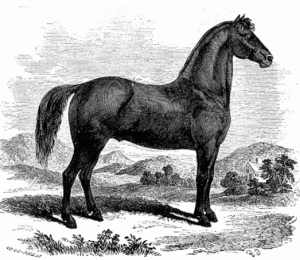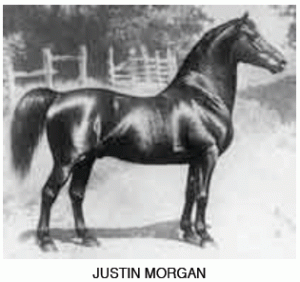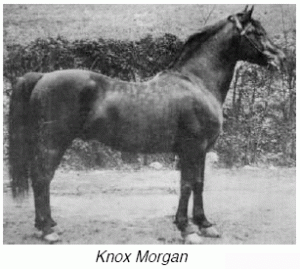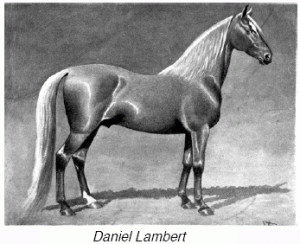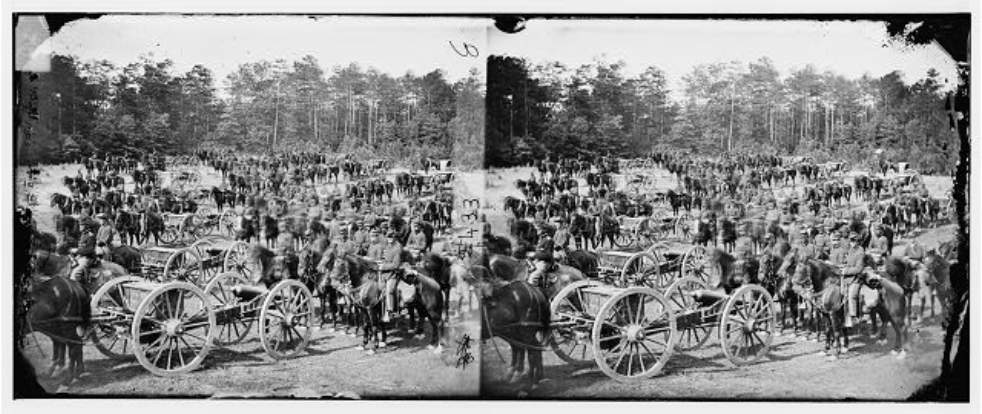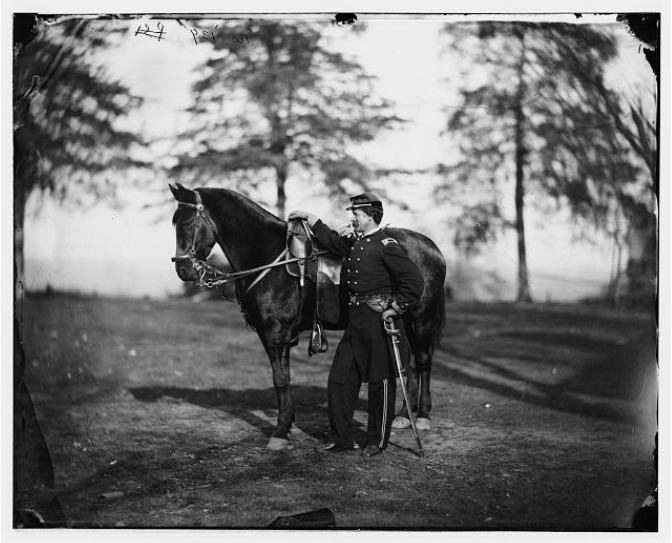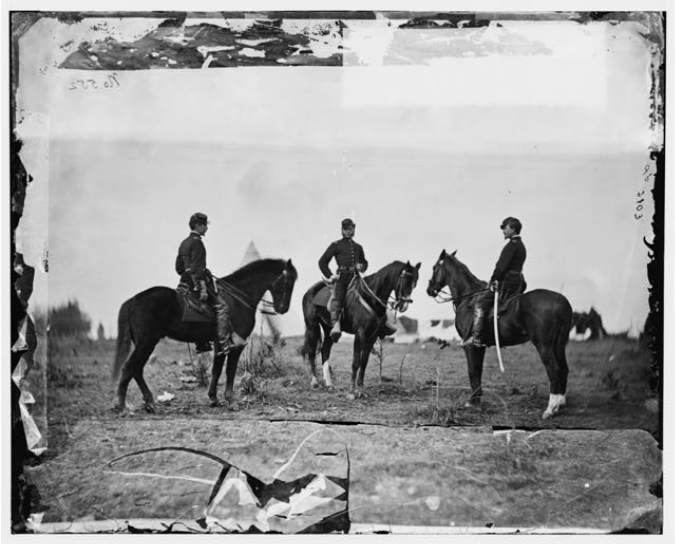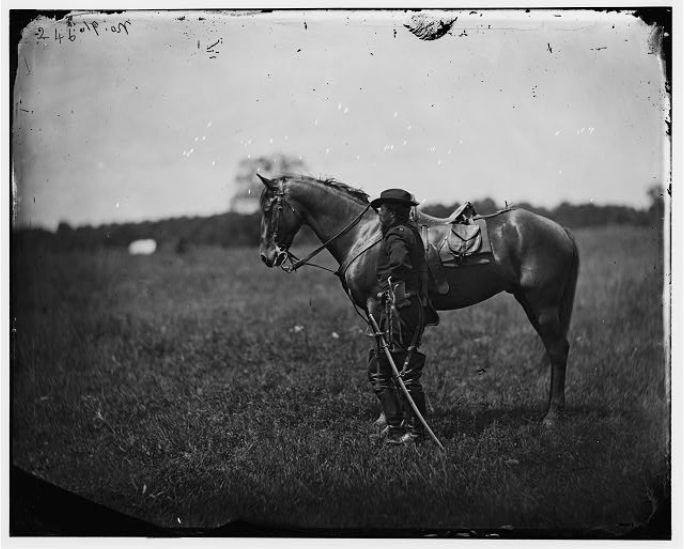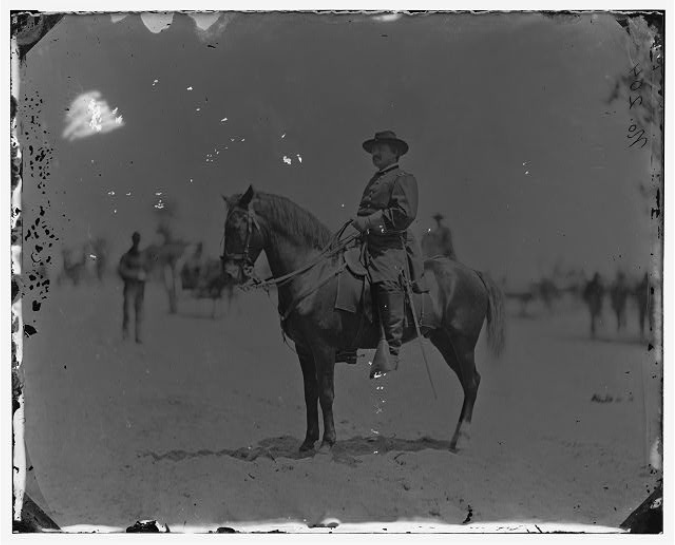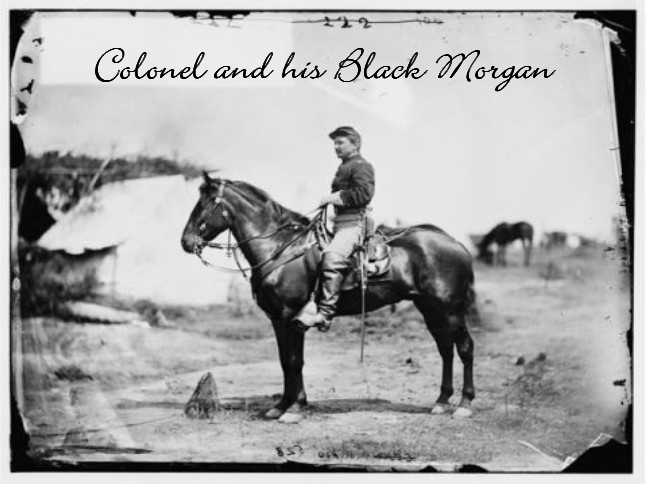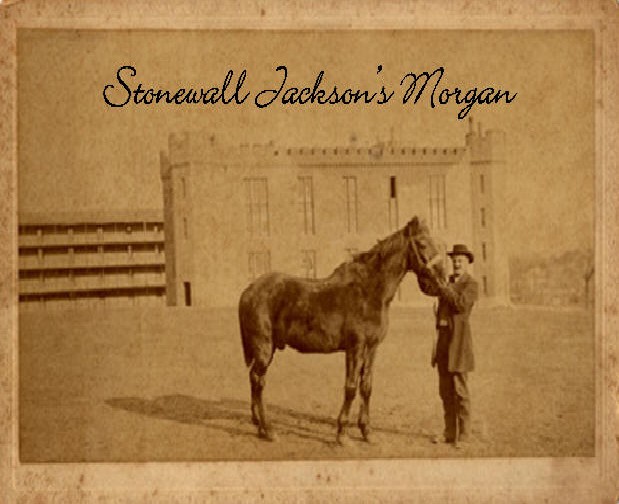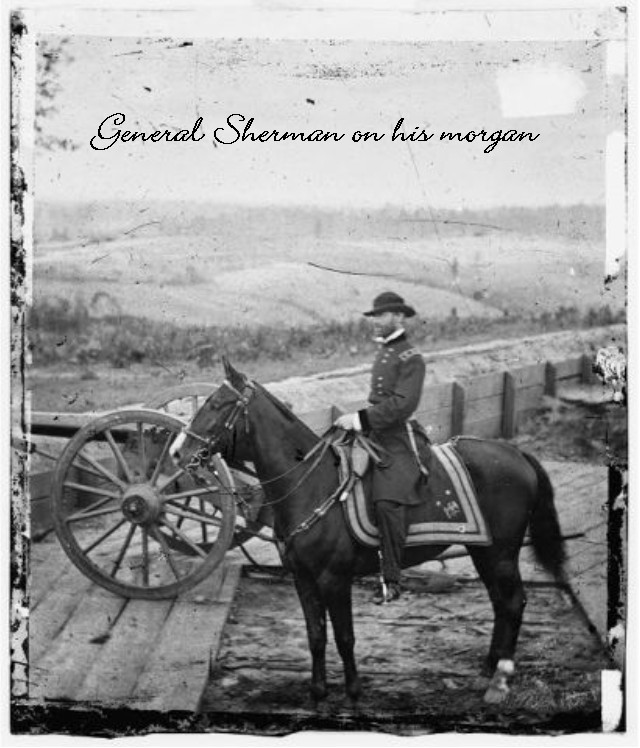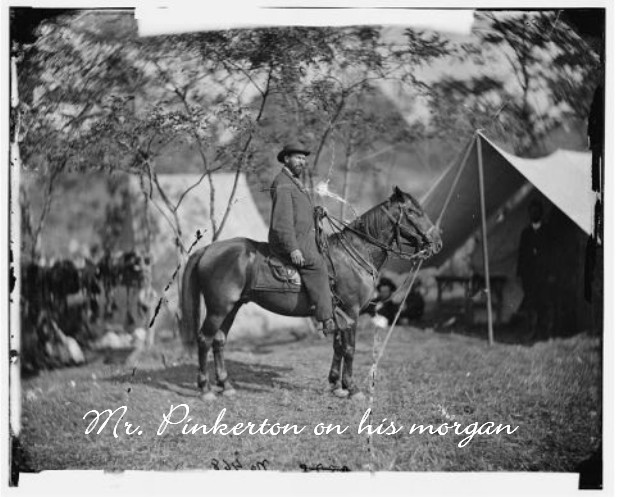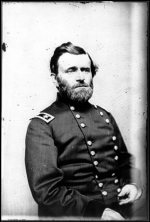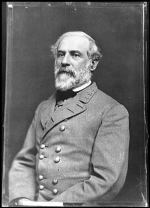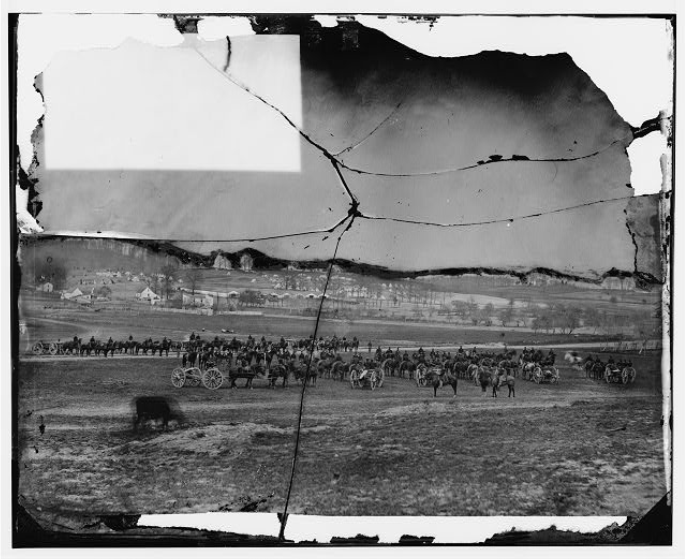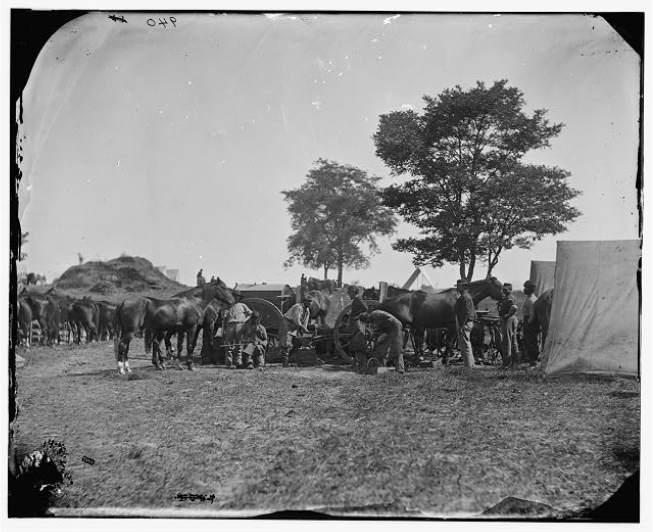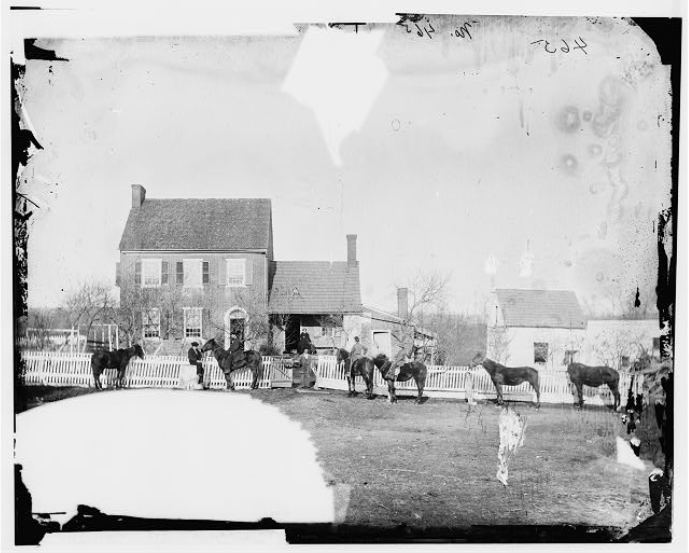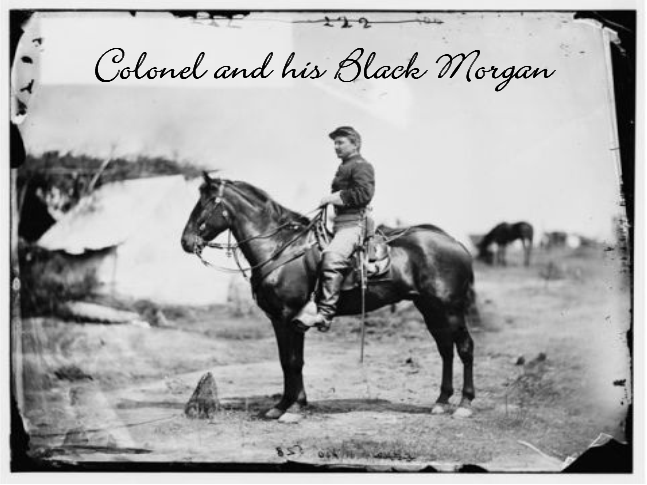
Lippitt Morgan Horses
What is it that sets the Lippitt apart from all other Morgan horses? Is it his physical attributes, his pedigree, presence…that special aura that seems to exude from his very being? The answer is all of these and more! A thorough understanding of the archetype Lippitt is certainly a must if one is intending to breed this unique Morgan. Justin Morgan stood around 14 hands and weighed in at around 950 pounds. His mane and tail were coarse and heavy, the hair straight. He was a very compact, heavily muscled stallion that had great substance with the added refinement to complete the picture. When one looked at him he exhibited a sense of strength, agility, beauty and grace. His attitude was cheerful and he had an abundance of great controllable energy.The head is lean, with the face being straight or slightly dished below the eyes. His forehead is broad, with generous width at the poll and between the eyes. There is distance as well from ear to eye and shortness from the eye to his large, dilated nostrils. The muzzle is small with the lips being close, fine, and firm. Large, dark, luminous eyes are prominent and are set well out on the sides of the head. The ears should be short (shorter than most other equine breeds), and set wide apart from each other. They are erect….even hooked. The stallion has a heavily rounded crest and the length of the neck is medium. The mare’s neck is fine, her crest being knife-like. The bottom line of the neck is straight and deep from the top to the bottom at the shoulders. The throatlatch may be deeper from the poll to the jowl and clean cut. The crest and withers must blend together without any indentation or depression in front of the withers. If you begin at the poll, the crest rises close to the ears forming a curve which is smooth and ends where the withers join the back. Most importantly, the neck is set on top of, rather than in front of, the shoulders. The most notable points on the whole horse are the back and legs . The back being very short with the shoulder blades and hip bones being long and oblique, the loins broad and muscular.






He was small…compact, with a body that was long, round, close ribbed with a chest that was deep and wide. How can he be long bodied without having a long back one would ask? The answer is simple in that he has extreme shoulder angulation giving him a longer bottom line than most other equine breeds. The breast-bone is noted as projecting out in front. His whole structure gave the impression of great substance, beauty and grace. The hindquarters are round and they have balance with respect to the front quarters. His croup is long, wide and slightly sloping, heavily muscled and well rounded. The tail is set high and carried well up and straight. The feet of the Lippitt are small, well shaped and should be free from blemish. The legs consist of short cannon bones, are close jointed, bones are thin, but very wide (bone density) with muscles that are considered large for his size. The pastern, fetlock, and foot should be similar to the front with the rear pasterns being more upright. As A. Fullerton Phillips stated in his book, “Type once lost can never be recovered. A horse may be beautiful and still not have the least resemblance to the Morgan family or a Morgan may not be beautiful or perfect but his blood may be so strong that he will be a very prepotent individual.” So, what of Lippitt movement or his “way of going?” Here is a description from D.C. Linsley’s book Morgan Horses: “He was a very fast walker. In trotting his gait was low and smooth, and his step short and nervous; he was not what in these days would be called fast, and we think it doubtful whether he could trot a mile much if any within four minutes, though it is claimed by many that he could trot it in three.” And another of his famous quotes: “Although he raised his feet but little, he never stumbled. His proud, bold and fearless style of movement, and his vigorous, untiring action, have, perhaps, never been surpassed.” Apparently, he has a “way of going” characteristic only onto himself. So where is this peculiar movement coming from and how is it being expressed? It is the flexion at the pastern. The walk is bold, short, fast, and elastic as is the trot. In the trot, the movement is low, ground covering, fast and smooth…nervous. Moreover the movement can be likened to the energy contained within a pressure cooker….it exudes strength, power and agility. The canter movement is powerful and elastic and comes from the hindquarters. All gaits are performed square and even and very often shoes are not needed. Such movements made in any gait has often been described as “trappy.” Trappy refers to the distinctive way in which the Lippitt Morgan moves. It is not the shoulder movement in as much as the rapid and elastic snapping of his knees and hocks. When the feet touch the ground they land flat, neither toe nor heel touch first and the feet do not linger. The terms ‘nervous and vigorous’ are often used to describe the movements made. Here, they are indicative of his rapid, quick, but very determined way of going. All the aforementioned characteristics are essential in both stallion and mare when the decision is made to begin a breeding program of the archetype Lippitt Morgan. It is not wise to confuse “type” and “quality:” to do so is a grave mistake. Quality can exist in any animal, whereas, type or breed identity, belongs specifically to the archetype Lippitt. Lippitt breeders should be interested in acquiring only near perfect Lippitt stallions and mares as their foundation stock. There should be a great interest in both the proliferation as well as the preservation of the Lippitt. Strive to put better than what you have on the ground. Technically, a Lippitt breeder with a “good eye” can pick out a Lippitt at great distances all because of the distinguishing characteristics exhibited by the Lippitt. He can also pick out quality along with breed identity. Take a look at your In-Hand classes. Good breeders look at what’s behind the horse as well as what’s in front of him. Does this Lippitt have what it takes to contribute in a positive manner to the gene pool? Does the stallion or mare have all the necessary characteristics mentioned at the beginning of this article? Do the grandparents? Does the mare or stallion have the ability to produce themselves or better? A judge, on the other hand, may look for conformation before breed identity of the Lippitt. This is just one of the injustices done to the Lippitt. Not all blue ribbon winners are exemplary Lippitts. When you look at a Lippitt you must look with “soft eyes,” looking beyond the apparent physical characteristics of say a producing mare who has foaled year after year, or an aged stallion with a dip in his back. Take into consideration that a colt or filly can change for the good or bad in time. Some mature faster than others and then again some fall apart. Lippitts have a standard all onto themselves. They also have certain peculiarities with the addition of quality. All in all, choose your foundation stock wisely and carefully and never make money the major issue.
Deborah Siegrist
Bibliography
1. Linsley, D. C., Morgan Horses,
VT:Sharp Offset Printing, Reprint 1997.
2. Parks, Clarence D., V.M.D., The
History, Standard of perfection, &
Judging Outlines for the Morgan Horse,
USA: Approved and Adopted by the Mid-
West Morgan Horse Owners, Inc., Dec.
1961.
3. Phillips, A. Fullerton, The Morgan
Horse As A Found Him, VT: The National
Museum of the Morgan Horse, 2003.
This information was kindly submitted by
Deborah Siegrist, Peppercorn Morgans –
www.peppercornmorgans.com


